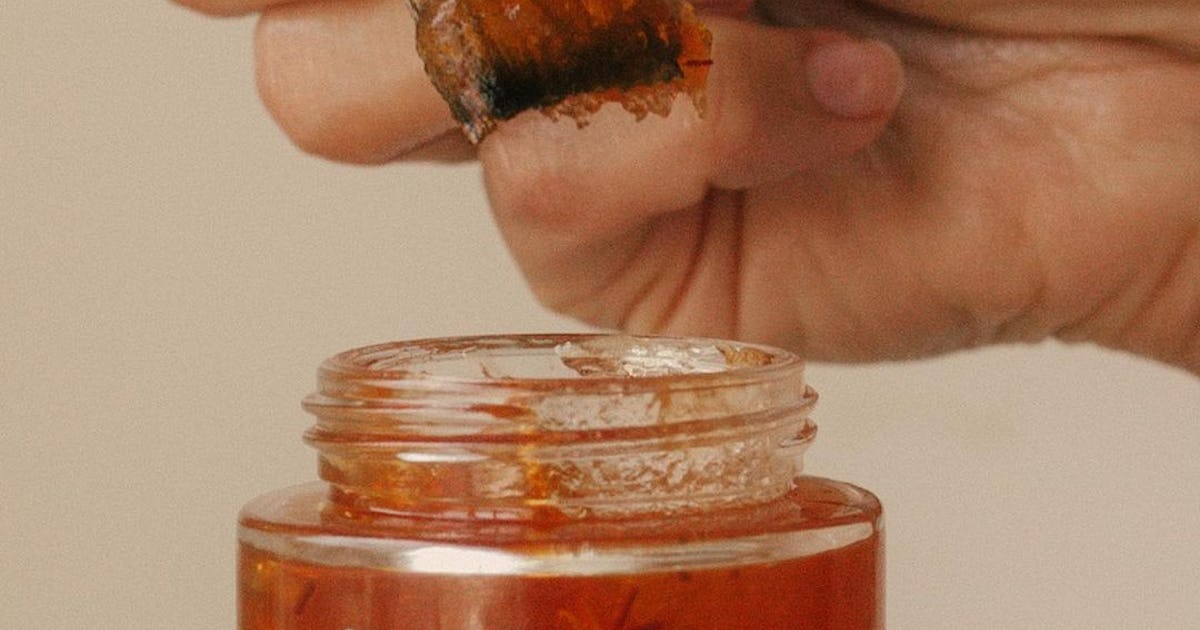As a hairstylist, I’ve encountered all types of matting, from mild to how-could-you-let-yourself-go-like-this severe.
Thus far, the worst matting I’ve come across was from individuals who had stayed in the hospital for extended periods of time. I can empathize; though I’m extremely particular about my hair, haircare won’t be on the top of my “to-do” list if I were in a hospital, either!
Detangling severely matted hair after a hospital stay may seem like an impossible task, especially if you haven’t touched your hair in months. And while it’s tempting to just cut off all the matting and start afresh, your hair can still be saved—and I’m here to show you how!
What Causes Severely Matted Hair During Hospital Stay?
Matted hair is the Lovecraftian lovechild of knots and tangles. It occurs when strands of hair entwine around each other to form clumps or clusters of hair fibers. These hair fibers twist around in an interlocking pattern, causing them to “fuse” together.
Without the right products and technique, matted can be incredibly painful to remove with just a comb or brush.
Although more common amongst those with dry or textured hair types, like curls or coils, matted hair can happen to anyone. Oftentimes, it’s caused by a combination of physical, behavioral, and chemical factors, such as neglected hair care, poor hygiene, and product buildup from improperly shampooed or conditioned hair.
All these factors can occur while you’re in the hospital. After all, not everyone has the time, energy, or patience to take care of their hair while in the hospital, especially in between doctor checkups and medications.
Other factors that may contribute to hair matting while in the hospital include:
- Improper use of hair ties or accessories
- Sleeping without a protective headwear
- Wearing extensions past their recommended use
- Long stints without trims

What can you do for Severely Matted Hair: A Step-by-Step Guide
While it’s tempting to grab a pair of scissors and cut off your matted hair, this should only be done as a last resort. Follow these steps to bring your hair back to life:
You’ll Need
- Hydrating shampoo
- Detangling conditioner
- Hair oil (optional)
- Wide-tooth comb
- Hair detangler brush
- Fine-tooth comb
Step 1: Choose the Right Products
If your hair is only slightly matted, you can get away with whatever shampoo and conditioner you have around. But if your hair is severely matted, you need to search for hair products with formulas that aid in hair detangling.
Use good-quality hydrating shampoo to add some hydration to the matted patches, as well as a restorative deep conditioner to add more slip between the strands.
For those with coily or afro-texture hair, olive oil, coconut oil, or Moroccan argan oil can be used alongside the conditioner.
Step 2: Shampoo Your Hair
As with any hair care routine, start the detangling process by rinsing and shampooing your hair.
Apply the shampoo to your hair, focusing on your scalp and the matted areas. Thoroughly but gently massage the shampoo onto your strands, making sure it’s fully coated with the product. Don’t remove the tangles just yet; the goal here is to clean and hydrate your hair.
Once you’ve properly shampooed your hair, rinse thoroughly. Then, squeeze out the water from your hair using a cotton towel so it’s not dripping wet for the next step.
While it’s possible to skip the shampooing process and start with the next step, it’s not something I would recommend. Skipping a thorough shampoo can make detangling harder and more painful, especially if you have a delicate and/or sensitive scalp or extremely curly hair.
Step 3: Condition Your Hair
With lightly dampened hair, massage in a hydrating or detangling deep conditioner onto the matted areas. If you don’t have a deep conditioner around, use a detangling spray or hair oil, such as argan, coconut, olive, or jojoba oil, to loosen up the matting.
Work the product through your hair, paying special attention to the matted areas. Take individual sections of your hair and add the product separately to avoid tangling your hair further.
Step 4: Let the Treatment Saturate Into Your Hair
If using an ordinary conditioner, leave it in your hair for at least three minutes to moisturize and soften the tangles.
Deep conditioners need to be left alone for twice or three times as long, sometimes up to 30 minutes depending on the brand. Check the label and leave it on for the amount of time specified.
For oils and detangling sprays, allow at least 30 minutes but no longer than two hours for maximum absorption.
While waiting for hair to soak in the product, wrap a plastic bag over your hair and fasten it with a hairband or hairpin. You can also use a plastic shower cap. This will keep your hair out of the way and prevent the product from dripping all over the place as you wait.
Step 5: Untangle With Your Fingers
Using your fingers, gently loosen the hair fibers by pulling the strands apart bit by bit.
Start at the ends and work your way up, loosening up the worst of the matting as you go.
This step makes it easier for the comb to untangle your hair. Be gentle, though; if you find yourself pulling the strands too hard, move on to a different tangled area. You just want to loosen the strands enough for the comb to glide through the strands.
Step 6: Untangle With a Wide-Tooth Comb
With a wide-tooth comb, gently and gradually work through your matted hair. Start from the bottom and make your way up to your scalp. Wide-toothed combs let smaller tangles slip through so you’re met with less resistance. Fine-toothed combs do the opposite, making it near-impossible to detangle without causing a lot of pain and breakage.
While you brush, hold onto a section of hair near your scalp. This not only prevents excessive pulling but also makes the combing process a bit less painful. Make sure to brush one strand at a time to make it more manageable.
Depending on how matted your hair is, the combing process alone can take anywhere between 30 minutes to several hours. Patience is key, here. If you rush, you might end up hurting yourself.
Wide-toothed combs let smaller tangles slip through so you’re met with less resistance. Fine-toothed combs do the opposite, making it near-impossible to detangle without causing a lot of pain and breakage.
While combing, you’ll notice a lot of hair falling out. Don’t worry, this is completely normal. After all, matted hair is mostly made up of already detached hairs. Just make sure you’re not pulling too much to prevent excessive hair loss.
Step 7: Switch to a Hairbrush
Once your hair is relatively knot-free, switch to a hairbrush with soft ball-ended bristles like the Denman Gentle Tangle Tamer.
Brush the hair downwards, covering the length of hair you’ve just combed to ensure it’s completely free of tangles. For particularly tough tangles, massage in a bit of hair oil to soften and lubricate the knots.
For best results, alternate between combing, brushing and using your fingers to detangle your hair as painlessly as possible. If you don’t have the strength or patience to do it yourself, ask for the help of a friend or family member.
Once the tangles begin to loosen and disappear, switch to a fine-toothed comb to work out any remaining small knots and tangles.
Step 8: Rinse Your Hair
Once you’ve fully untangled your hair, it’s time to rinse out the product.
If possible, use cold water instead of warm water. Cold water not only smoothes your strands but keeps them separated.
While washing your hair, glide your fingers through the strands, making sure they’re free of knots.
If you have tightly coiled or afro-textured hair, separate your hair into small sections and rinse one at a time. Then, work in a hair oil or conditioner on the previously matted area to soften, repair, and hydrate the damaged hair. Leave it for several minutes before rinsing.
Step 9: Dry Your Hair
Squeeze out excess water from your hair using your hands, then wrap a microfiber towel or cotton t-shirt around your hair to absorb the remaining moisture and let air dry. Then, tie your hair in a loose braid.
And there you have it, you’ve successfully untangled your severely matted hair!
Remember: this process can take several hours to complete, depending on the severity. Don’t give up! If you can’t untangle your hair in one session, divide it into multiple sessions. Separate the areas you’ve untangled with a clip and do the remaining areas after several hours.
How to Prevent Matted Hair: Tips and Tricks to Keep Hair in Top Condition
Detangling severely matted hair can be a long and arduous process, especially if you have long or coily hair. Instead of going through the tiring process every few weeks, prevent matting entirely with the following tips:
- Comb your hair on a daily basis, or at the very least before and after washing your hair. Don’t wait until knots start to form.
- When washing your hair, use a conditioner, detangler, or both.
- Use a hydrating shampoo and conditioner. If your hair is prone to knots and tangles, take advantage of products specifically made for detangling hair.
- Use a deep conditioner at least once every month to keep your hair hydrated as dry hair increases the risk of matting.
- Rinse your hair properly. Product build-up causes hair strands to tangle together, making them susceptible to matting.
- Before going to bed, wrap your hair with a silk or a satin bonnet to prevent breakage and matting. If you’re not used to sleeping with a bonnet, loosely braid your hair instead.
- Avoid heating and chemical hair treatments as they can damage and dry out hair, which makes it more prone to matting.
- Take care of your hair extensions. Visit a professional for regular upkeep every six to eight months to keep them in tip-top condition.
Frequently Asked Questions
Can you use mayonnaise to detangle hair?
Some beauty gurus swear by the effectiveness of mayonnaise when it comes to detangling hair. After all, it’s thick, creamy, and has the right ingredients to nourish and moisturize your hair. It also leaves hair soft and shiny.
Still, I wouldn’t recommend using mayonnaise for detangling or otherwise, as it doesn’t smell good and isn’t nearly as potent as commercial deep conditioners. If your hair is severely matted, it’s worth investing in a good-quality conditioner to ensure its effectiveness.
Can you use WD-40 on matted hair?
WD-40 is commonly used to lubricate and protect metal surfaces, so it wouldn’t be much of a stretch to think that it’ll work on severely matted hair. And you’d be right—it does work on matted hair. It can be used in place of a conditioner.
That said, WD-40 isn’t healthy or safe on human hair. While it does help with the matting, it can also damage hair and cause irritation on the scalp. A thick conditioner is always the way to go when detangling hair.
What’s acute hair matting?
Acute hair matting (AHM), also known as acute hair felting or Plica Polonica, is a rare scalp disorder in which hair presents as a hard stony mass resembling a bird’s nest. It’s usually caused by severe neglect, poor scalp hygiene, and parasitic infestation.
Treatment of acute hair matting involves cutting the matted hair or completely shaving off the hair from the head. This type of hair matting is so severe that the matted hair is essentially dead and needs to be removed for scalp treatment.
Conclusion
It’s difficult to take care of your hair while you’re in the hospital, so matting is inevitable. Luckily, you don’t have to chop off your hair to remove the matting. Even if it’s severely matted, it can still be saved with a bit of time, patience, and the right tools and products.
Just follow the steps above to detangle and maintain your hair, and it’ll look just as soft and beautiful as it was before your hospital stay!



















/https://specials-images.forbesimg.com/imageserve/604ad3acf728cc29468fec2e/0x0.jpg?cropX1=0&cropX2=846&cropY1=47&cropY2=523)
![See Inside the Amazing Homes of State Music’s Queens [Pics]](https://townsquare.media/site/204/files/2020/08/tim-mcgraw-faith-hill-mansion-california-pictures.jpg?w=1200&h=0&zc=1&s=0&a=t&q=89)











